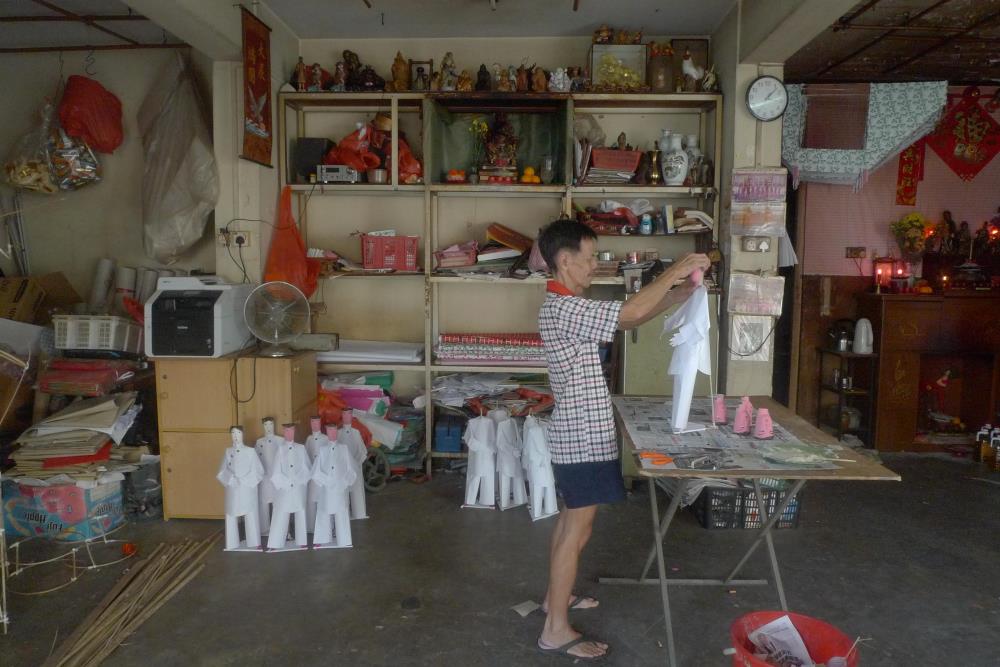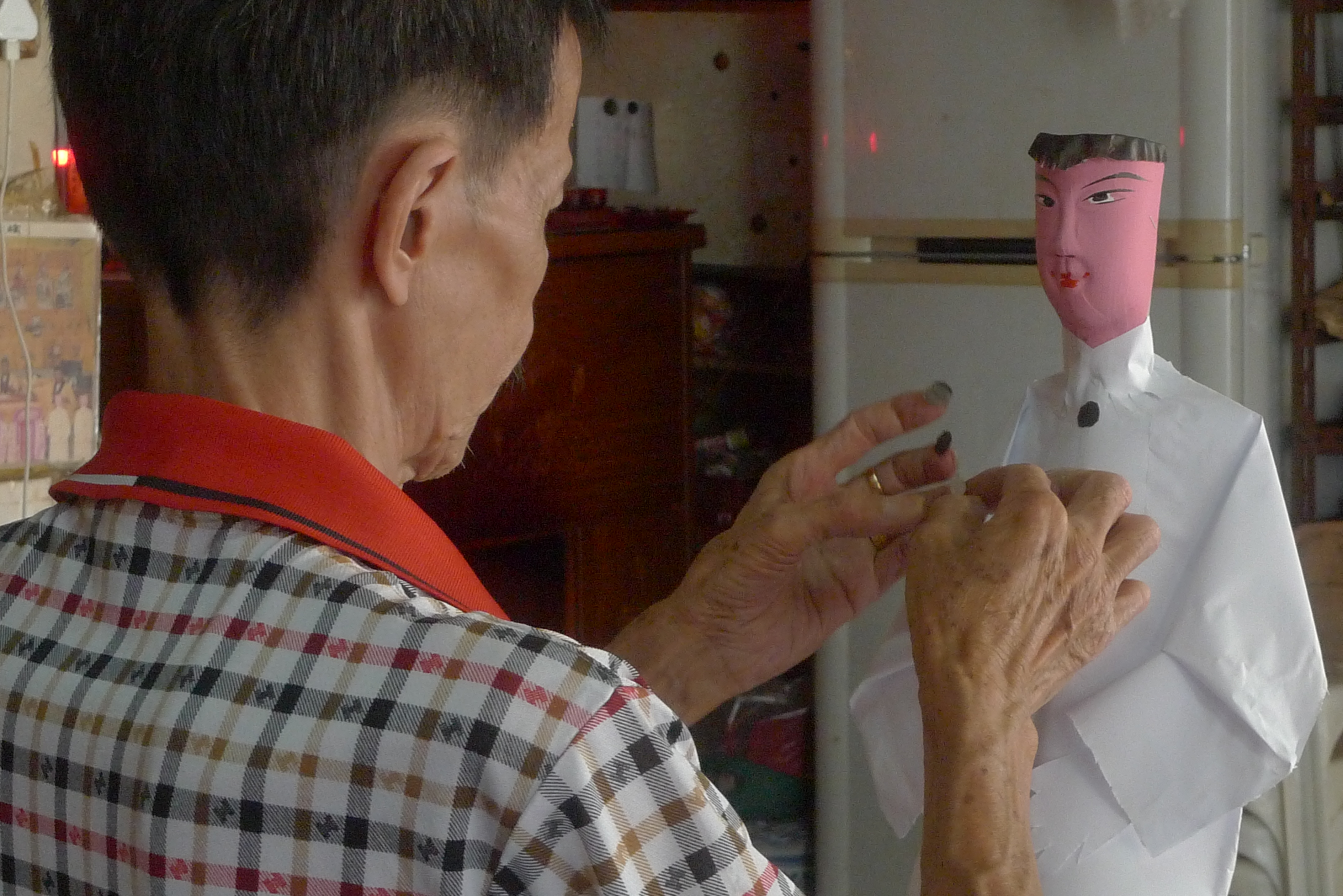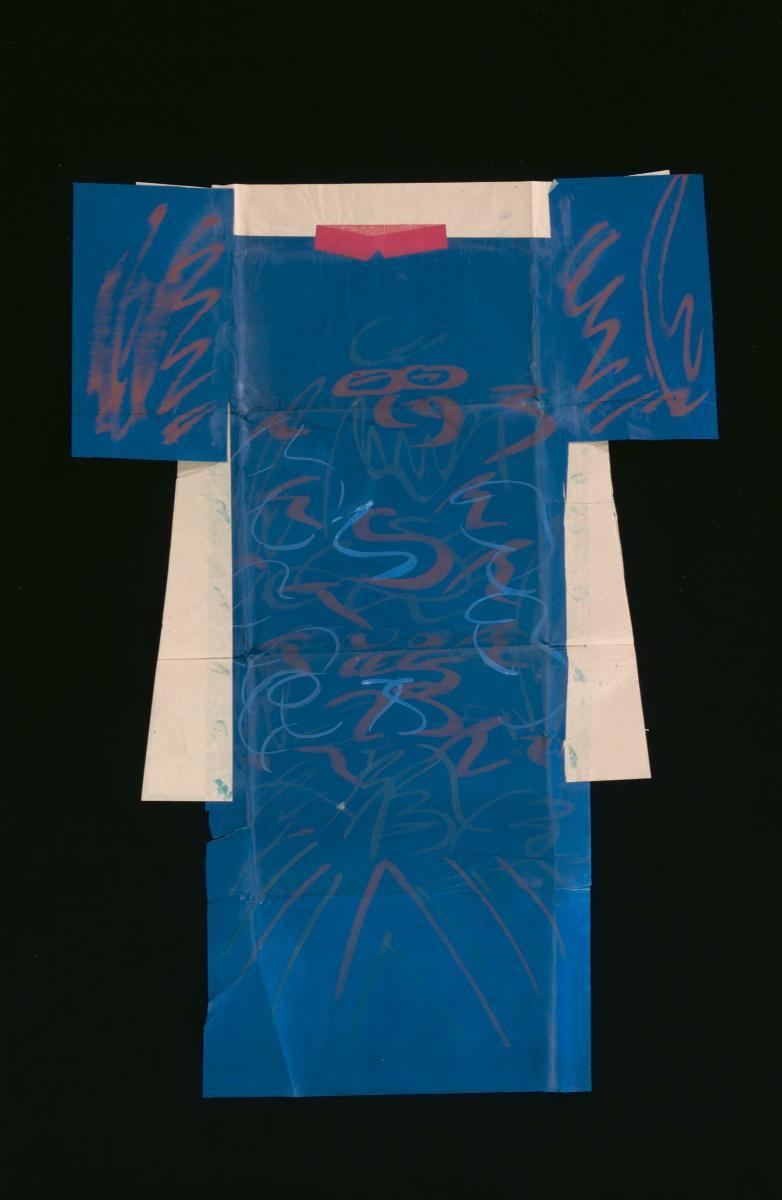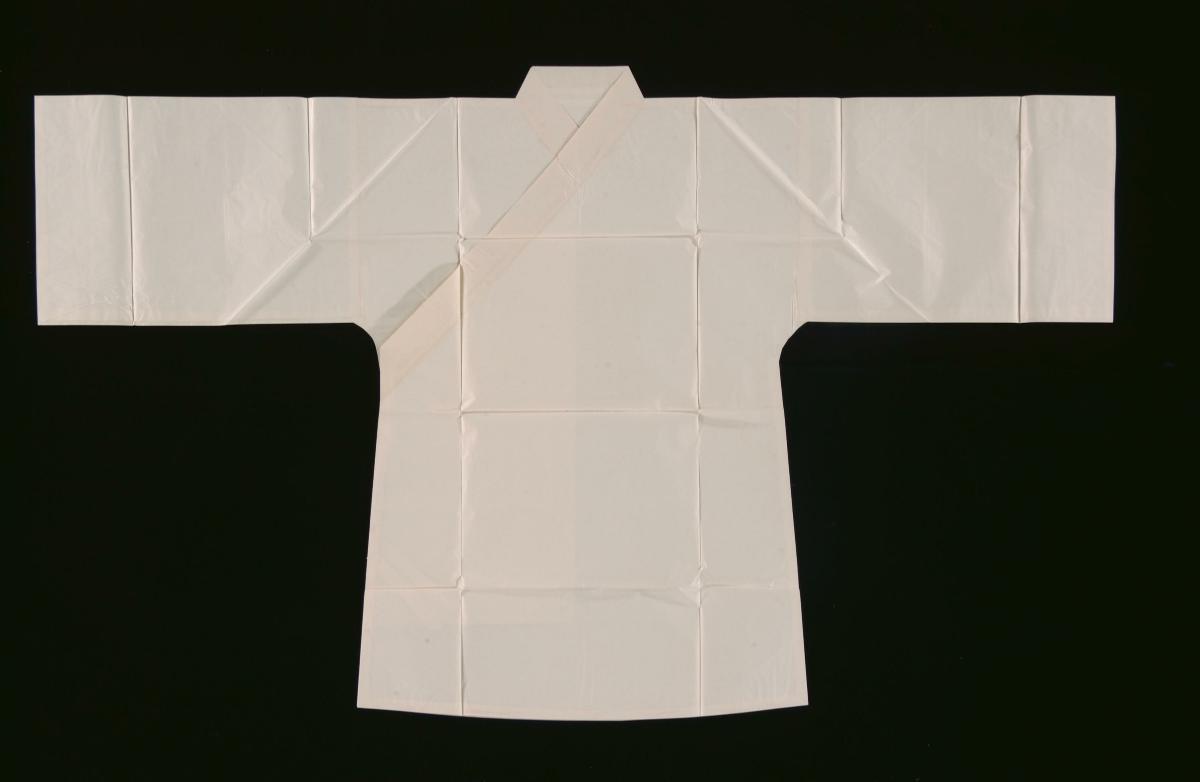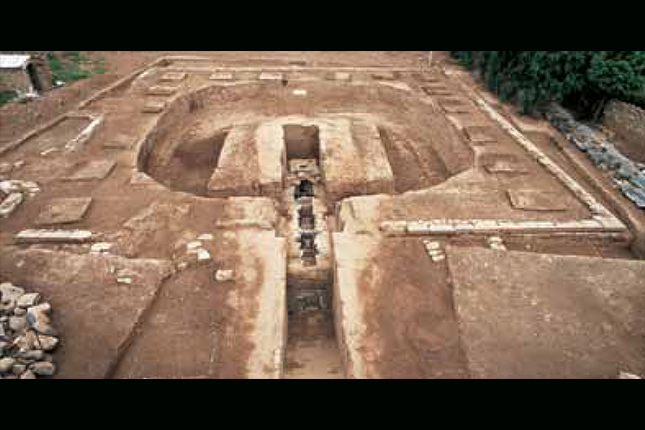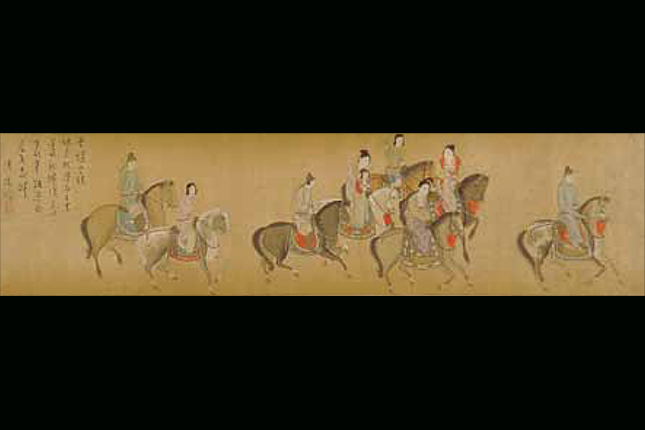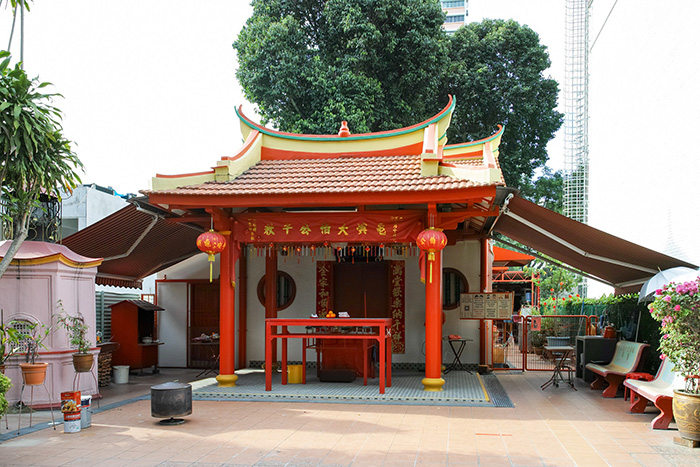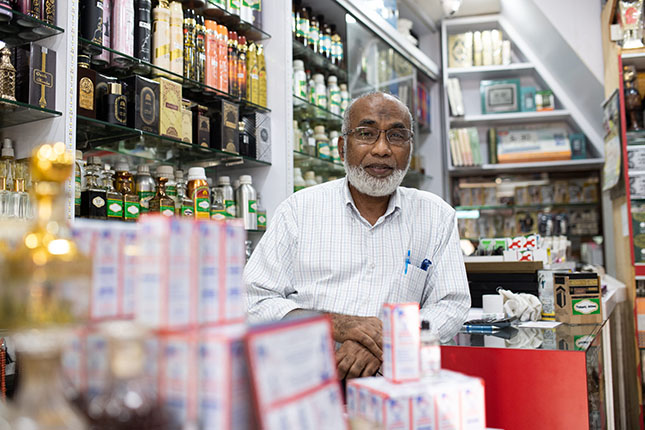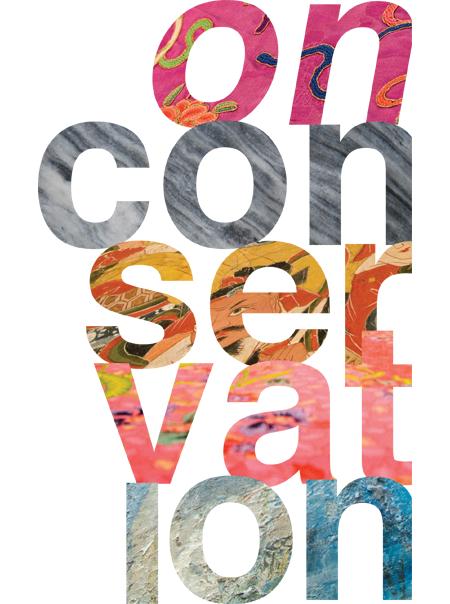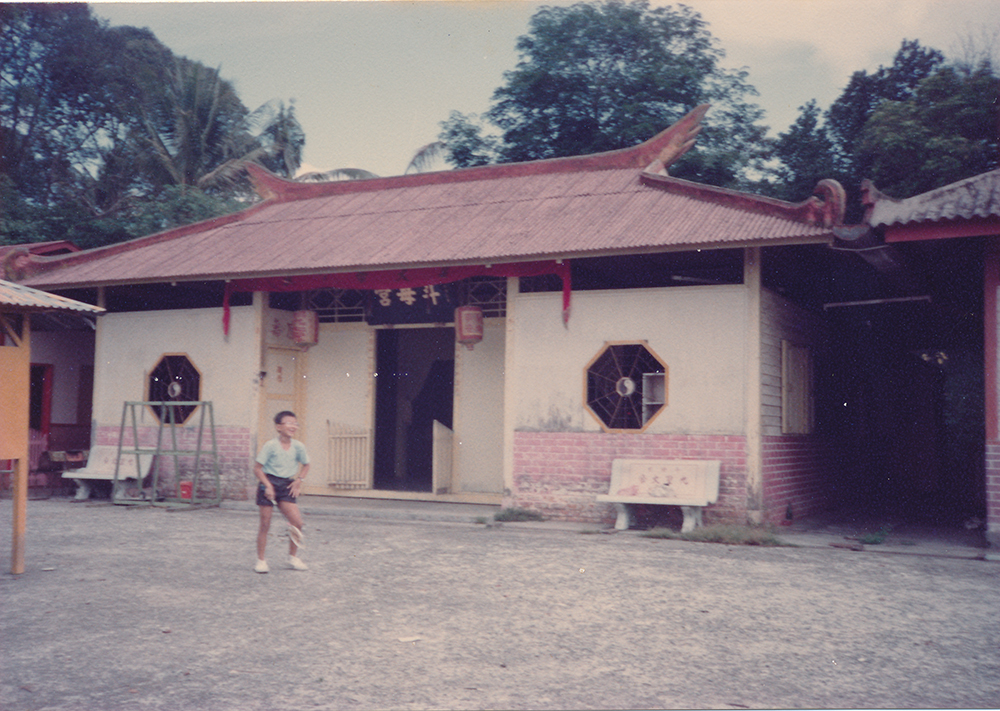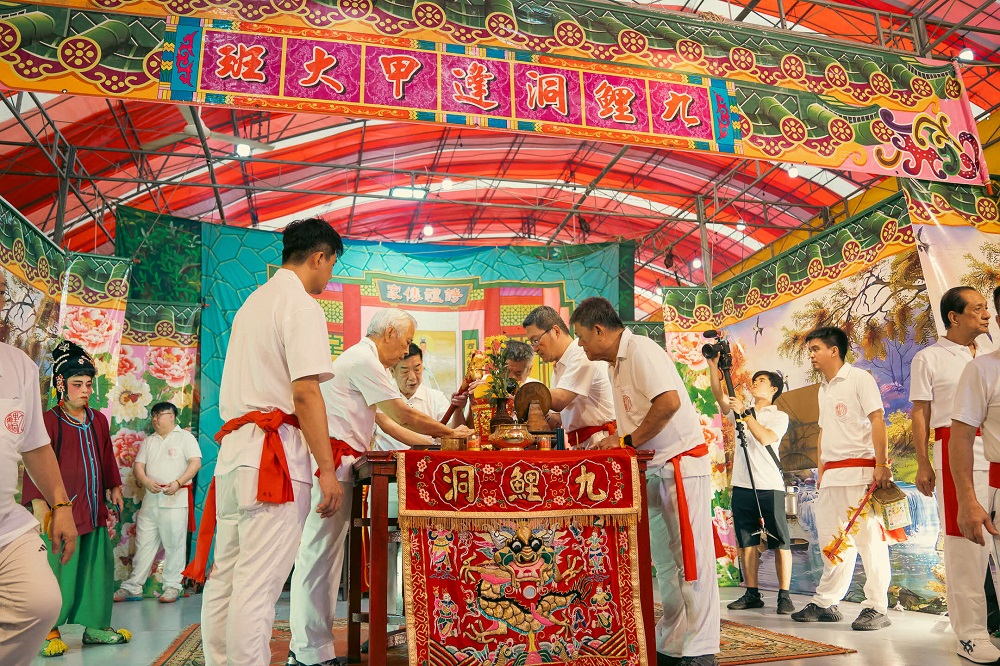Making of Chinese Paper Offerings
The practice of burning of Chinese paper offerings dates as far back as the Song Dynasty in China. Paper offerings are burnt for the deceased and deities particularly during occasions such as the Hungry Ghost Festival. As a physical representation of ancestor worship, the practice allows the living to maintain kinship with the deceased. The burning of paper offerings is also considered an expression of filial piety to provide one’s ancestors with the means to enjoy the comforts of what they once had when they were alive.
There are also some people who burn paper offerings to the anonymous dead to ease their suffering in the afterlife. Besides appeasing the dead, one may also burn offerings to gain favour from the gods to overcome any difficulties one may have. The act of burning is seen as transforming the offerings in a way that releases their value to the intended recipients.
People turn to craftsmen to create the offerings, which are may include depictions of material goods such as houses and cars.
Geographic Location
The making and burning of Chinese paper offerings is practised not only in China but also in Singapore, Malaysia and in many other places where there are Chinese communities. The burning of the offerings may take place in dedicated spaces such as temples as well as in the privacy of one’s home.
In Singapore, makers and sellers of paper offerings are spread across the island, and located mostly in neighbourhood locations.
Communities Involved
In Singapore, Taoists and some Buddhists practise the burning of paper offerings. Most of them are not involved in the making of the paper offerings, which is handled by a handful of businesses that specialise in this trade. Many of these are traditionally family-owned, with family members pitching in maintaining the trade. An established name in the trade is Ban Kah Hiang, a family business which started in the 1940s. It is patronised by Taoist and Buddhist worshippers, and is a regular supplier of offerings to temples. Another example is Sin Hoe Hin Joss Paper Dealer, a three-generation family business whose current owner learned the craft by observing his father and a shi fu (master) from China.
Associated Social and Cultural Practices
There are many varieties of offerings, with designs differing by region and dialect group. The offerings can be two-dimensional (2D) or three-dimensional (3D). The former is foldable, such as paper money, joss paper, and even paper credit cards. Joss paper is traditionally made from coarse bamboo paper and cut into individual squares or rectangles with a thin piece of foil attached at its centre. Paper money may have the words “Hell Bank Notes” printed on them. It can also be folded into 3D ingots, which holds greater value than unfolded paper money.
Other 3D offerings come in pitched forms such as paper houses, cars, and even paper servants. The main materials used in pitched offerings are bamboo, glue, and paper. To manufacture a 3D offering, the craftsman uses six techniques—cutting, folding, punching, crushing, shaping, and pulling. These techniques create a framework or armature for the offering, giving it shape and structure. A craftsman new to the trade starts by learning how to properly split and prepare bamboo strips for the armatures. Colouring of these objects was also traditionally done by hand. In fact, the ability to make an offering from scratch is said to be the real sign of a craftsman.
Experience of a Practitioner
Mr Lai Yew Onn is the owner of Yew Chye Religious Goods Trading, located in Chinatown. He shared that by the 1980s, there were around ten shops making paper offerings in Chinatown. However, only two or three of these shops remain and all have moved out of the Chinatown area.
Watch: Making of Chinese Paper Offerings
Mr Lai, who has been making paper offerings since he was 18, has a stellar reputation for being able to fulfil tough customers’ requests for all kinds of paper offerings. He has made non-traditional items such as a paper dog, a motorcycle, drums, golf clubs, and even a personalised bungalow with a garden.
To Mr Lai, innovation is the key to staying afloat. As many customers prefer customised items, it is up to the craftsman to adapt or create new products with sophisticated details. Mr Lai does not make the offerings from scratch: he gets bamboo and paper from local suppliers, and decorative items such as flowers and faces from local shops. However, he does most of the laborious and time-consuming work himself, including the splitting of the bamboo sticks.
Present Status
The experience of Mr Lai is similar to that of many paper offering craftspersons. While Mr Lai is willing to teach others, the challenge lies in trainees staying long enough to learn the craft. Typically, a craftsperson in this line works long hours for a low profit margin and it is a seasonal trade. The future of the hand-made paper offerings is uncertain, as fewer young people are showing interest in this traditional craft.
At the same time, craft makers in Singapore are trying to innovate and introduce new ways of making their products relevant. They find themselves having to adapt to the demand for novelty paper offerings such as tech gadgets, European cars, and even tea-scented candles. Increasing requests for unique and contemporary designs, such as LED lights and clocks in the paper houses, demand that the craftsperson be creative and find new ways of meeting the demands of their customers.
References
Reference Number: ICH-059
Date of Inclusion: March 2019
References
Laing, Ellen Johnston & Liu Helen Hui-Ling. Up in Flames: The Ephemeral Art of Pasted-Paper Sculpture in Taiwan. Stanford: Stanford University Press, 2004.
Lee, Eng Kew. The Study of Chinese Obsequies in Malaysia. Malaysia: Dream Seed Printing, 2012.
Scott, Janet Lee. For Gods, Ghosts and Ancestors: The Chinese Tradition of Paper Offerings. Hong Kong: Hong Kong University Press, 2007.




